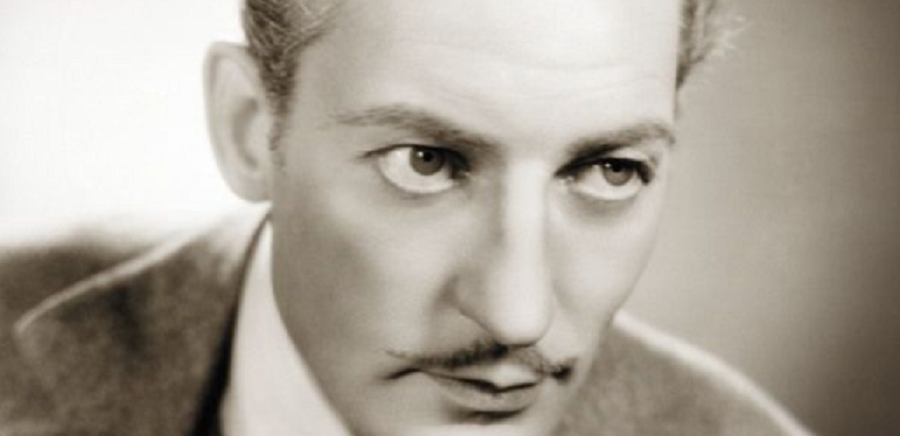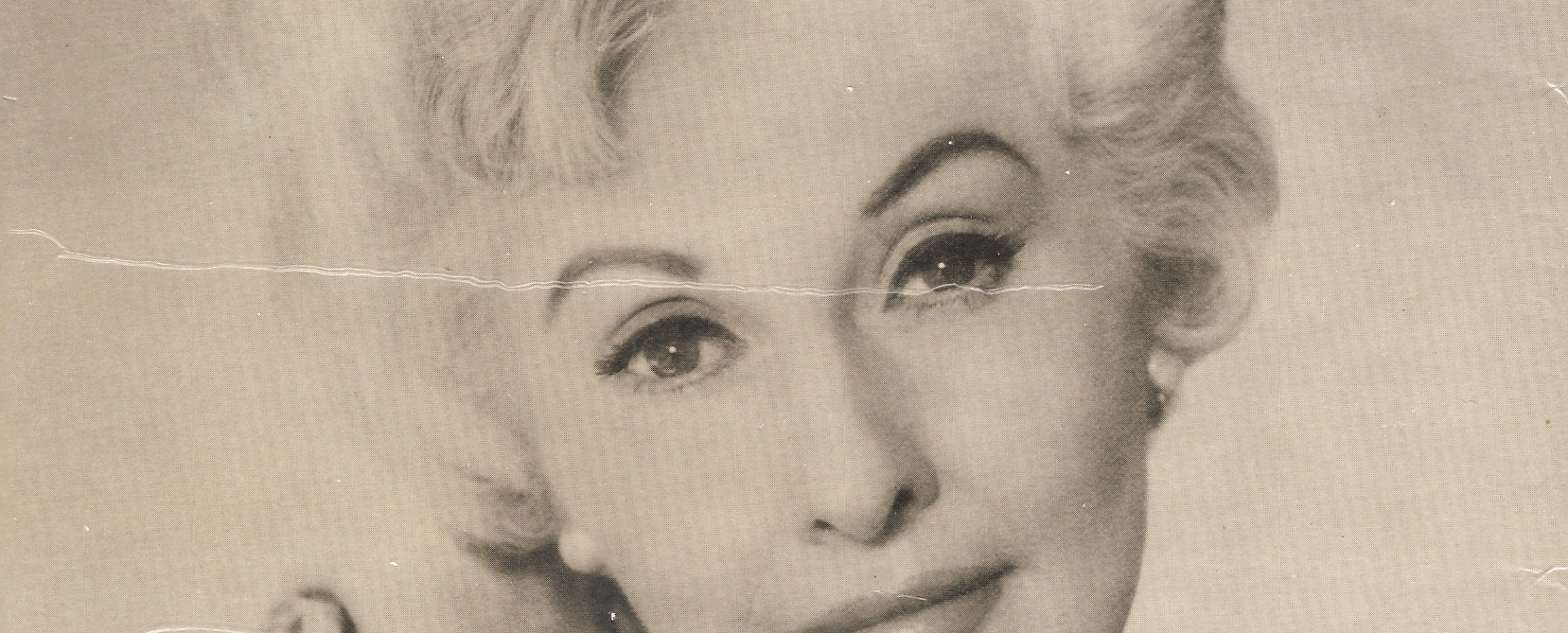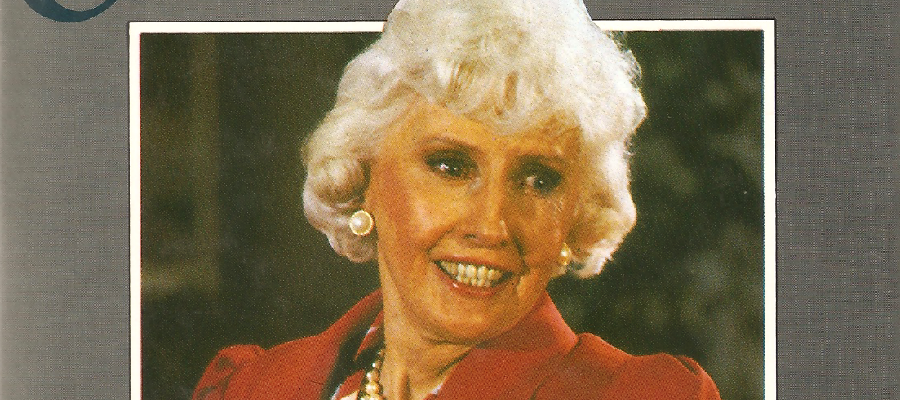When I mentioned I was writing a book about Barbara Stanwyck to people around my age (mid-twenties to mid-thirties), they usually didn’t quite know who she was, unfortunately. If they asked me what movies she had been in, I always rushed right to Double Indemnity first, thinking they might have at least heard of that. Stanwyck probably made better movies, but none seem to have had the pop cultural impact of this Billy Wilder classic—even if some recent commentators have taken to making complaints about the blond wig Wilder had her wear.
It’s not often I check to see how many pages I have left in a book, and it’s pretty disheartening when I’m only on page 16. Dan Callahan’s Barbara Stanwyck: The Miracle Woman is the kind of book I regret receiving as a gift and one I had to finish in a single day less I never be able to force myself to pick it up again.
Here’s the beginning of the first chapter:
Barbara Stanwyck had a hard childhood, that’s certain. She didn’t linger over it, and I’m not going to either, but it’s worth mulling over with some of the available information and considering what it might tell us about her.
Very noble, not to linger but to freely mull. In fact, what Callahan frequently does is mull, parlaying the book into one extended parlor trick of connecting nearly every work that Stanwyck put out to two or three major life events and relationships.
For a fun drinking game (it’s the only way), I suggest taking a shot every time Frank Fay or Robert Taylor ungraciously bow in, the more outrageous connection the more sips. Callahan frequently sees their relationships and her own childhood as the catalyst for all of her acting greatness. This leads to several ludicrous connections in dozens of her films—is she imagining murdering Frank Fay in Double Indemnity? Sure, why not. What else is there to great acting than hating an ex-husband?
Worse, this leads to the author tooting his own horn as he tries to connect the lesbian undertones in several of Stanwyck’s films. He gets to toss off terms like “dykealicious”, which, if it doesn’t show a contempt for the readers’ intelligence, certainly does them no favors.
For pre-Code fans (such as, oh, myself), Callahan registers smug contempt for the films of the early 30s. Besides his trashing of a multitude of non-Stanwyck actresses (and his praise of Garbo in Camille—as sure a sign as any that I should never have picked this book up), he notes up front:
There’s been a lot written about movies made before the censorious Production Code cracked down on Hollywood in 1934—probably too much, so that the talkies made from 1930-34 are now endlessly packaged at New York’s Film Forum repertory theater and on DVD as *dirty* old movies, quaint novelties that hint about the more relaxed mores of the time, a relaxation that really began in the twenties with the first flappers, women like Colleen Moore and Clara Bow.
If you’re one of those people who can’t see the difference in varying complexities between the silent and the talkies, I’m sorry. But that endless sentence is resentful bullshit, an attempt to homogenize film and make things simpler for his readers who he must see at the third grade level. And, of course, it gives him an excuse not to talk about Stanwyck and fire more half coherent opinions, which seems to be where his real desire lies.
While he does pay rightful due to work like The Bitter Tea of General Yen, it’s often between ludicrous tale-spinning (Forbidden was a massive metaphor for Capra trying to get Stanwyck to sleep with him—look at this map, I have it all connected!). And, again, don’t worry if you think Callahan is holding back, here he is lending you his notes on morality in the middle of his review of Baby Face:
Cragg corrupts her with the philosopher’s lowest ideas: “All life, no matter how we idealize it, is nothing more nor less than exploitation.” To my mind, this is the kind of thought that needs to be firmly rejected, but at least it gets Lily on a train to New York[.]
His entire description of one-time roommate Mae Clarke is “that grapefruit girl from The Public Enemy”, and he makes no bones about his frustrations with dozens of great directors and stars, which is as certainly the center of the book as the endless summaries and their tenuous connections drone on and on. He appreciates what Capra did with Stanwyck even though he points him out as “filled with hate and resentment”. Billy Wilder is a misogynist, Gregg Toland ruined Ball of Fire with his deep focus photography, Robert Taylor had mommy issues, and much more besides.
Between bashing everyone and anyone in the margins, he seems eager to try and place Stanwyck in the pantheon between Davis and Crawford, as if his sloppy words could be an addendum to any of Stanwyck’s greatness. For all the jockeying for position, it’s a fool’s errand—anyone who’s picked up the book probably already knows who Barbara Stanwyck is, which should be enough to convince them of it.
That becomes clear as Callahan tries to connect to her, to understand her personal politics with something other than revulsion or disgust but he only finds that that detracts from his self-congratulating summaries. For all of his complaints, nothing in this book sees Stanwyck as anything more than the sum of her parts, a woman filled with hate and spite that at least made a few pictures worthy of the great author’s purview.
I often consider whether reading a biography was worth the time I spent based on what I learned from it and how well it was written. With that as my criteria, don’t bother fishing it out of a sewer drain.
Reading level: Devotee.
Published: 2012.
Length: endless 220 pages.



11 Comments
Mariah · July 18, 2016 at 4:28 am
Victoria Wilson’s book is much better! I can’t wait for volume 2!
Tony · July 18, 2016 at 7:52 am
Great article, I enjoy your book reviews very much. They provide a good piece of information about what’s out there to read about pre-Code Hollywood and old films in general.
I sympathize with you for what you write in the beginning, it’s been the story of my life too. Countless times I refer to an old actor and they ask me “who’s he/she” and I tell myself “which film is the most likely to know?”. Sometimes the most popular film isn’t the best, although in this case my personal opinion is that Double Indemnity is probably Stanwyck’s best masterpiece.
Vanessa (@callmeveebee) · July 18, 2016 at 9:57 pm
This guy sounds like a real douchebag. Glad I never picked this book up.
Raquel (@QuelleLove) · July 18, 2016 at 11:42 pm
Thanks for reading this book so we don’t have too. Looks like a case of the author got in the way of his own book. Sheesh!
Emgee · July 19, 2016 at 4:32 am
You wonder why he wrote the book at all,(or how he got it published), if he has such scant interest in either Stanwyck or early Hollywood movies.
Just finished Victoria Wilson’s fantastic first volume of her Stanwyck biography; now that’s good writing!
BTW Love the site!
Patricia Nolan-Hall (@CaftanWoman) · July 20, 2016 at 3:25 am
If nothing else, it sounds like Dan Callahan knows how to waste time – his and ours.
Jandy · July 20, 2016 at 11:13 am
Wow, this book is to my to-read list, but looks like I can definitely cross it off now! Have you read/do you recommend the Victoria Wilson one(s) instead?
nitrateglow · July 21, 2016 at 7:23 am
The moment an author shows contempt for pre code or silent films, I have no use for them at all. Thank you for the warning. This author sounds like an ass.
Diann · July 27, 2016 at 2:33 am
Has anyone read “A Life of Barbara Stanwyck: Steel-True 1907 – 1940”? Curious as it weighs in at 860 pages(just vol. I !!) Would like to know what I’m getting into before reading It. Thanks!
La Faustin · July 27, 2016 at 7:42 am
Hey, hey, hey! While I haven’t read this book, I know Dan Callahan as a well-informed and sensitive writer on silents and Pre-Codes, eg. http://chiseler.org/post/127318465926/ruth-chatterton-the-gilded-lily
Klara Novak · March 7, 2017 at 12:12 am
Oh, wow. I haven’t gotten to the Stanwyck book, but Callahan’s numerous profiles on actors, which are available on various online sites, are unique, perceptive, and often moving. He’s certainly given me new insights into actors I love and pointed me in the direction of many films and performances I hadn’t heard of, so the dismissive, rather personal tone directed at him here (even more in the comments than the review itself) is startling to me.
Comments are closed.